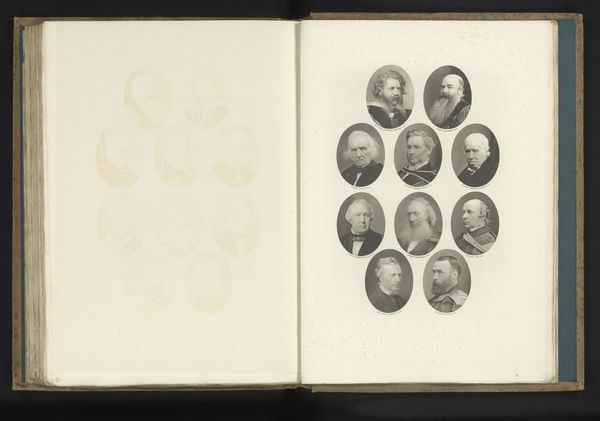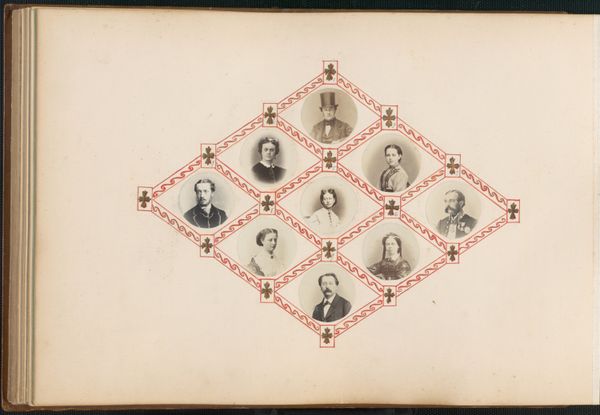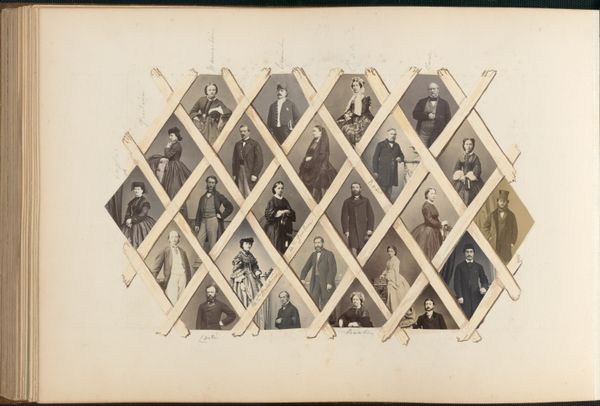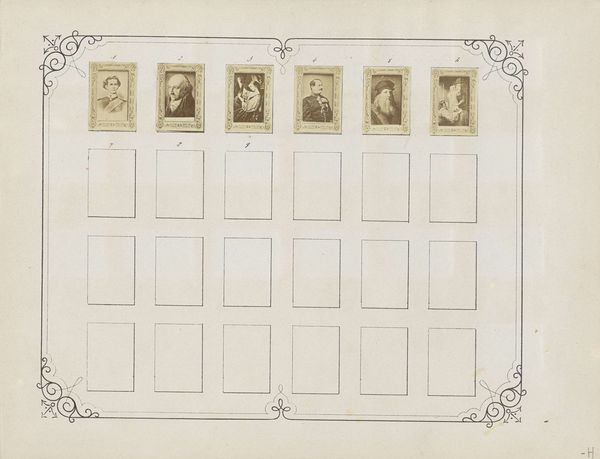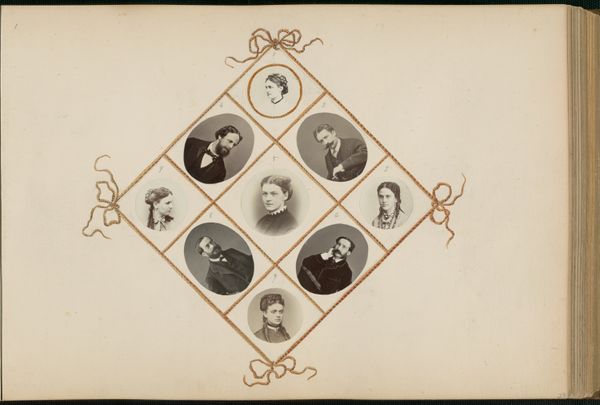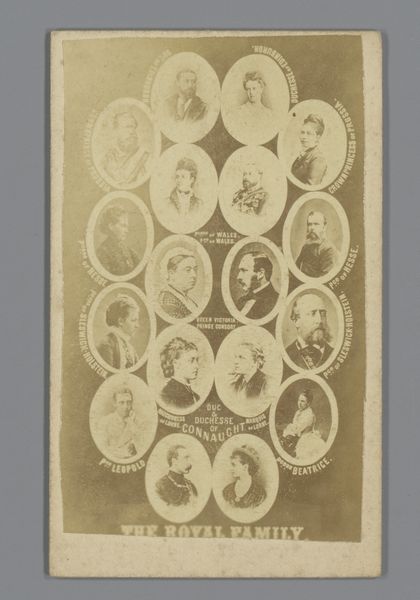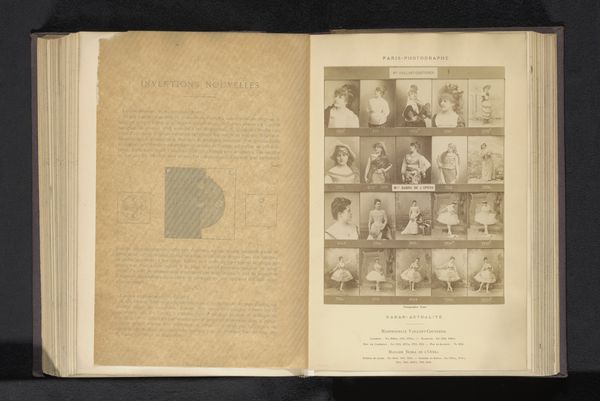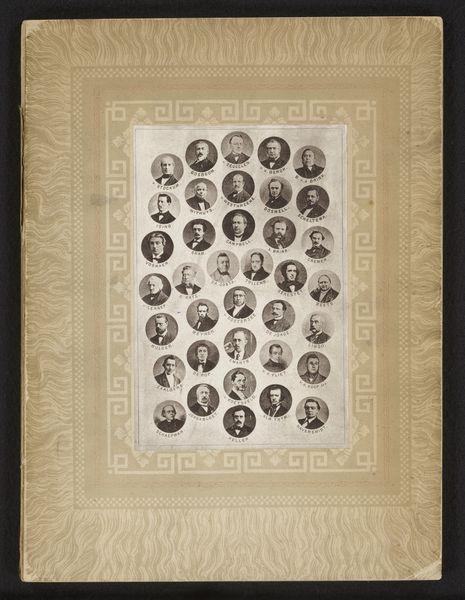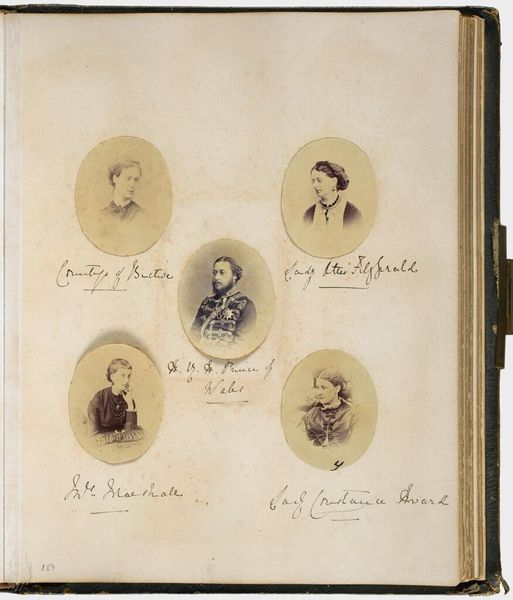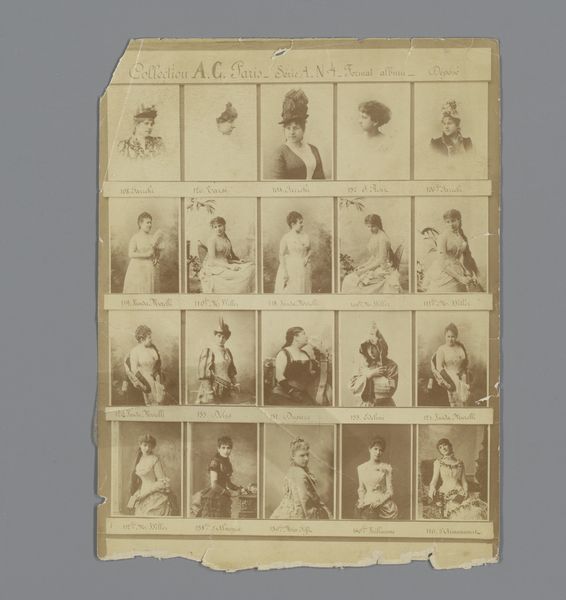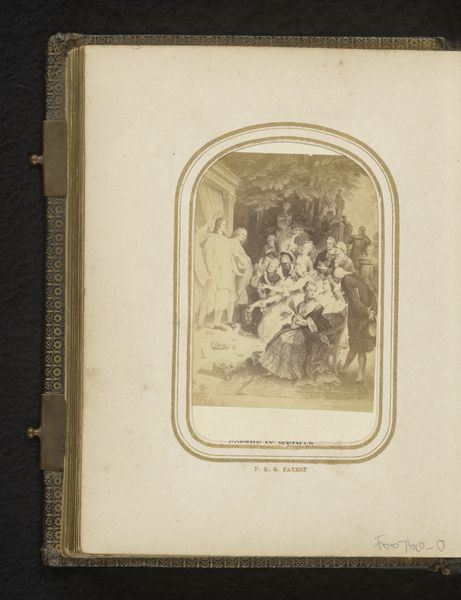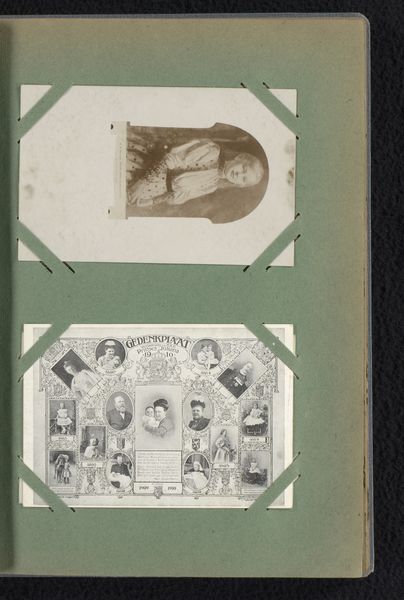
Tien portretten van Beethoven en andere componisten en musici 1880 - 1910
0:00
0:00
anonymous
Rijksmuseum
print, photography
#
portrait
#
still-life-photography
#
water colours
# print
#
photography
#
realism
Dimensions: height 134 mm, width 96 mm
Copyright: Rijks Museum: Open Domain
Editor: Here we have "Ten Portraits of Beethoven and Other Composers and Musicians," dating from somewhere between 1880 and 1910. It's a photograph, or rather a print of a photograph, now held at the Rijksmuseum. I’m struck by the formality of these tiny oval portraits, almost like a musical court of fame. What story do you see it telling? Curator: The organization into these ovals arranged on the page itself suggests something interesting about celebrity culture at the time. The piece serves as an almost democratic pantheon of musical geniuses but in a format easily reproducible for mass consumption. Were these portraits taken from existing images or newly commissioned, and what does that tell us about image rights and accessibility at the time? Editor: That's fascinating! It does feel quite accessible. Was photography often used in this way – to disseminate images of important figures? Curator: Absolutely. Photography became increasingly affordable, allowing the general public access to visual representations of prominent figures. Prints like this democratized access, breaking down previous class and economic barriers. Consider how sheet music or small plaster busts might have functioned before this period, and how the photograph reshaped the public’s engagement with celebrity. Editor: So, it’s not just about admiring Beethoven, but also about having access, owning a piece of his image, and those of others? Curator: Precisely. The photograph allows for a personal connection, a form of possession through the image. It’s also important to consider the context of display – would this have been in a home, a music school, a shop? And what would that location imply about its function as an object of reverence and of popular culture? Editor: That makes me think about the role of these institutions shaping taste. It’s really shifted my perspective. Thanks! Curator: The pleasure's all mine. Looking closely, it gives us insight into art's place in culture beyond just aesthetic admiration.
Comments
No comments
Be the first to comment and join the conversation on the ultimate creative platform.
